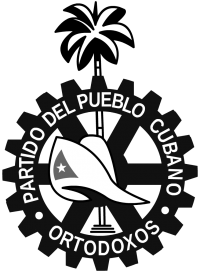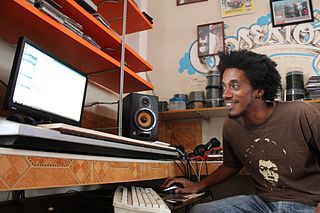The music of Cuba, including its instruments, performance and dance, comprises a large set of unique traditions influenced mostly by west African and European music. Due to the syncretic nature of most of its genres, Cuban music is often considered one of the richest and most influential regional musics of the world. For instance, the son cubano merges an adapted Spanish guitar (tres), melody, harmony, and lyrical traditions with Afro-Cuban percussion and rhythms. Almost nothing remains of the original native traditions, since the native population was exterminated in the 16th century.

The Trío Matamoros was one of the most popular Cuban trova groups. It was formed in 1925 by Miguel Matamoros, Rafael Cueto and Siro Rodríguez. All three were singers and composers.
Danzón is the official musical genre and dance of Cuba. It is also an active musical form in Mexico, and is much loved in Puerto Rico as well. Written in 2
4 time, the danzón is a slow, formal partner dance, requiring set footwork around syncopated beats, and incorporating elegant pauses while the couples stand listening to virtuoso instrumental passages, as characteristically played by a charanga or tipica ensemble.
Palo, also known as Las Reglas de Congo, is a religion with various denominations which developed in Cuba among Central African slaves and their descendants who originated in the Congo Basin. Denominations often referred to as "branches" of Palo include Mayombe, Monte, Briyumba, and Kimbisa. The Spanish word palo "stick" was applied to the religion in Cuba due to the use of wooden sticks in the preparation of altars, which were also called la Nganga, el caldero, nkisi or la prenda. Priests of Palo are known as Paleros, Tatas (men), Yayas (women) or Nganguleros. Initiates are known as ngueyos or pino nuevo.

Pablo Rodríguez Lozada, better known as Tito Rodríguez, was a Puerto Rican singer and bandleader. He started his career singing under the tutelage of his brother, Johnny Rodríguez. In the 1940s, both moved to New York, where Tito worked as a percussionist in several popular rhumba ensembles, before directing his own group to great success during the 1950s. His most prolific years coincided with the peak of the mambo and cha-cha-cha dance craze. He also recorded boleros, sones, guarachas and pachangas.

Regla is one of the 15 municipalities or boroughs in the city of Havana, Cuba. It comprises the town of Regla, located at the bottom of Havana Bay in a former aborigine settlement named Guaicanamar, in a peninsula dividing Marimelena from Guasabacoa inlets and the village of Casablanca, located and the entry of the Havana Bay.
The guaracha is a genre of music that originated in Cuba, of rapid tempo and comic or picaresque lyrics. The word had been used in this sense at least since the late 18th and early 19th century. Guarachas were played and sung in musical theatres and in low-class dance salons. They became an integral part of bufo comic theatre in the mid-19th century. During the later 19th and the early 20th century the guaracha was a favourite musical form in the brothels of Havana. The guaracha survives today in the repertoires of some trova musicians, conjuntos and Cuban-style big bands.

The Party of the Cuban People – Orthodox, commonly called Orthodox Party, was a Cuban left-wing populist political party. It was founded in 1947 by Eduardo Chibás in response to government corruption and lack of reform. Its primary aims were the establishment of a distinct national identity, economic independence and the implementation of social reforms.

Dionisio Ramón Emilio Valdés Amaro, better known as Bebo Valdés, was a Cuban pianist, bandleader, composer and arranger. He was a central figure in the golden age of Cuban music, led two famous big bands, and was one of the "house" arrangers for the Tropicana Club.
Miguel Ángel Barnet Lanza is a Cuban writer, novelist and ethnographer. Known as an expert on Afro-Cuban culture, he studied sociology at the University of Havana, under Fernando Ortiz, the pioneer of Cuban anthropology. Barnet is best known for his Biografia de un cimmarón (1966), the life of Esteban Montejo, a former slave who was 103 when they met. He had escaped and lived as a maroon before slavery was abolished in Cuba.
Benito Antonio Fernández Ortiz, better known as Ñico Saquito, was a Cuban trova songwriter, guitarist and singer. He is widely considered the most prolific and successful composer of guarachas, most of which he wrote during his stint as a member of Los Guaracheros de Oriente. Among his most enduring compositions are "Cuidadito compay gallo", "María Cristina", "Adiós compay gato", "Al vaivén de mi carreta", "Camina como Chencha" and "Amarrao compé".

Obsesión is a hip-hop duo consisting of Alexey Rodriguez, Isnay Rodriguez, and Magia Lopez. They have been writing and playing music since 1996 and are considered to be one of the most notable groups of the hip hop movement in Cuba. They live and work in Regla, an industrial suburb east of Havana, Cuba.

José Ignacio Sánchez Rius, better known as Josignacio, is a contemporary Cuban artist who is associated with neo-figurative and abstract painting.
Enrique González Castillo, nicknamed La Pulga, was a Cuban singer-songwriter from Santiago de Cuba. His two most famous works are the boleros "Injusta duda" and "Lupina", which have been recorded by artists such as Arsenio Rodríguez and Compay Segundo, respectively. The latter was written for danzonete singer Pablo Quevedo in 1934. His repertoire included boleros, canciones, guarachas and guajiras written by himself. The height of his career took place in the 1930s and '40s in Havana, where he was the guitarist for Benny Moré before he joined Conjunto Matamoros to tour Mexico. In addition, he was part of several other vocal groups, collaborating with famous guarachero Ñico Saquito.
Music of African heritage in Cuba derives from the musical traditions of the many ethnic groups from different parts of West Africa that were brought to Cuba as slaves between the 16th and 19th centuries. Members of some of these groups formed their own ethnic associations or cabildos, in which cultural traditions were conserved, including musical ones.
Francisco Hernández Mora, better known as Pancho Quinto, was a Cuban rumba percussionist and teacher. He was the founder of Yoruba Andabo and one of the "godfathers" of the guarapachangueo style of Cuban rumba. His solo career began in the 1990s after he gained international attention through his collaborations with Jane Bunnett and other artists.








